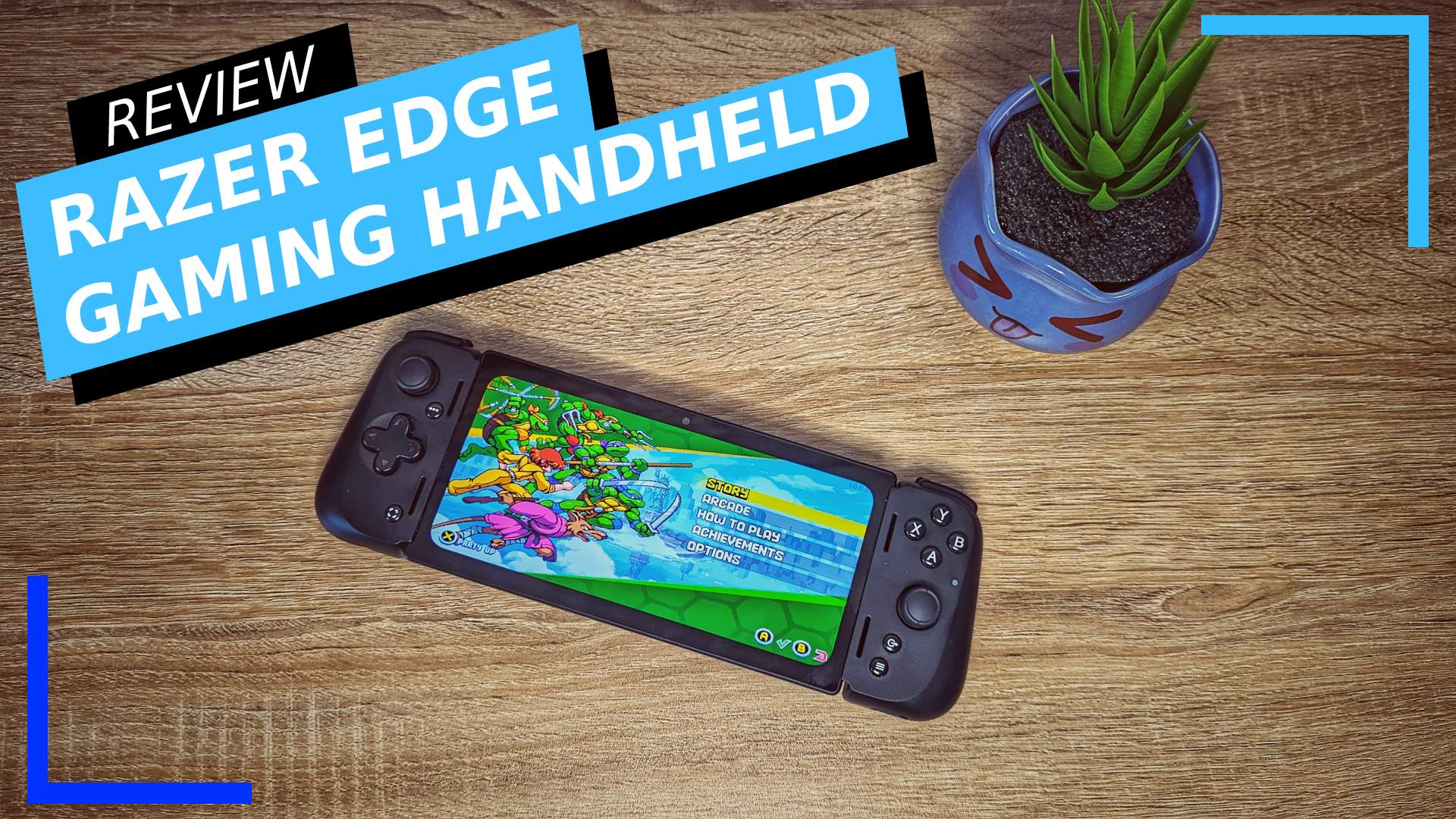Overall Impressions
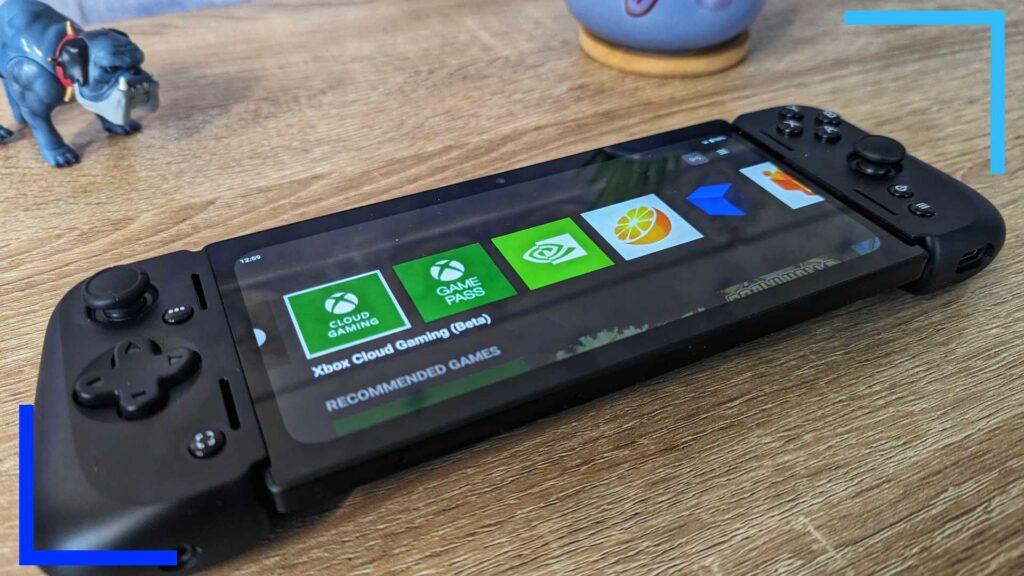
There’s a case to be made that the Razer Edge is one of the strongest Android handhelds out there. The tech inside trumps the likes of the Logitech G Cloud and lesser-known rivals like the AYN Odin.
But whereas those consoles feel like finished products, the Razer Edge feels underbaked. It is, quite literally, a tablet encased in the Razer Kishi V2 mobile controller. Is the tablet good? Kind of. In terms of power, this thing is capable of some seriously high-end feats of magic. But then it doesn’t feel like the tablet this controller was designed for.
Take the screen for example. The 6.8-inch AMOLED 144Hz screen stuns in all the right ways. But it’s certainly a choice to go with the 2400×1080 ratio (16:9 but longer) and add rounded bezels around the screen that cut off a small portion of the corners. You can, of course, not fill the screen and live with the full image alongside thick black lines, but it’s hard not to feel like you aren’t getting the full-screen usage if you do that. It’s truly a bizarre choice.
The same goes for the Razer Kishi V2. Elements of the controller are close to perfection. The D-pad is the star along with the triggers, both of which move intuitively and have the right amount of pushback to them.
But then there’s the sticks. They are essentially Nintendo Switch joysticks. For sprinting, the convex nature works, but try aiming with a convex joystick and problems arise. They lack the precision of their concave counterparts seen in the Steam Deck, PlayStation, or Xbox equivalents.
For emulation, it’s not a major concern, but the moment you start playing something like Fortnite or Cyberpunk 2077, aiming, especially in first-person, feels uncomfortable.
I also found the bumpers and the triggers are simply too close to one another, resulting in often accidental clicks.
Oh, and that screenshot/streaming button? While a solid idea, is an annoyance. I don’t want to livestream anything, so accidentally clicking it and getting vaulted out of what I’m doing so the Razer Edge can connect to streaming platforms is an annoyance.
The operating system runs on Android, which has become the go-to system when it comes to handhelds thanks to its flexibility. But the control scheme isn’t quite where it needs to be. Another example: The ‘B’ button in Chrome doesn’t go back a page, it minimizes the entire app. Then there are smaller things like not being able to click on the pin icon in GeForce NOW. Neither the touchscreen nor the controller can seem to click it no matter what.
For the most part, the controller does what it needs to in an operating system it wasn’t originally designed for. But play with the Razer Edge for long enough and those molehills become mountains.
What’s most frustrating is these gripes shouldn’t exist, and in spite of them, the Razer Edge still manages to be an excellent machine. The visual fidelity is sure to drop jaws, especially when you’re streaming games with ray-tracing enabled. Likewise, the power of the Snapdragon G3x Gen 1 married to the 6GB or 8GB of LPDDR5 RAM means this beast is capable of a lot when it comes to native games or emulation.
Plus having a cooling system in place means the device can be pushed harder than, say, the Logitech G Cloud.
In short, the Razer Edge is a killer device with some killer kit, but the absurdity of some of the design choices is sure to grate in the long run.
Build Quality
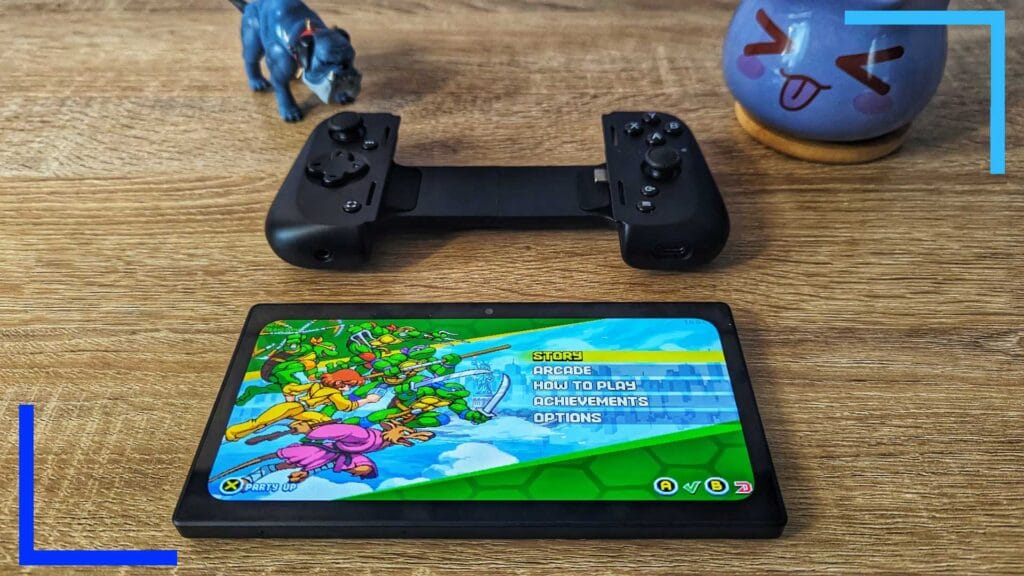
Everything about the Razer Edge handheld shouts quality. From the lush textured grip on the Razer Kishi V2 controller to the smooth matte finish, everything has been designed to feel sturdy yet exquisite.
Slotting the tablet portion of the device into the Kishi V2 feels as natural as it can, and never feels like you could damage either part of the device by slotting and unslotting it a lot.
I did find the left side of the screen can move about somewhat, though. The right side houses the USB-C port that clicks into the Kishi V2 to connect the two parts. But the left side doesn’t have much outside of the thin lip to keep it in place, resulting it in sliding if pushed hard enough.
This is the problem with the Razer Edge not being a dedicated handheld – it’s a tablet bundled with a Kishi V2, so all the errors of the Razer Kishi controller come along for the ride. Even though the Logitech G Cloud isn’t as powerful as the Razer Edge, the fact it’s a dedicated handheld means problems like the sliding of the screen can’t be an issue.
Emulation and Benchmarks
Emulation really is where things get interesting. The Razer Edge comes with access to the Google Play Store out the box, so getting up and running really is just a case of downloading the apps you need.
During my testing, everything I threw at the Razer Edge worked surprisingly well. God of War: Chains of Olympus for PSP runs at a smooth 60 frames at four times the original resolution. You can even push it up to eight times the resolution for max crispness, but expect some frame drops here and there.
For GameCube I tried Mario Kart Double Dash, which again ran at a smooth 60 frames complete with upscaling.
It’s the same story for the 3DS and Wii titles I tried as well: 60 frames, with differing levels of upscaling, all with very few problems.
But how far can the Razer Edge be pushed? That’s the question I found myself pondering while I was unable to break its ceiling. Nintendo Switch? This is where the surprise happens.
Nintendo Switch is a mixed bag. Not because of the Razer Edge itself, but because compatibility is spotty regardless of the platform you play on. Even on the more powerful Steam Deck games struggle to run. So pinch of salt here, yeah?
The only compatible game I had a dump of I could try was Teenage Mutant Ninja Turtles: Shredder’s Revenge. Admittedly that’s a fairly low-spec game, but it ran at 60 frames per second and the combat felt fluid. I’d also wager thanks to the AMOLED screen, the Razer Edge is the definitive place to play the Switch version of the game. How mad is that?
| Game Tested | Performance Rating |
| Spider-Man (N64) | 5/5 |
| StarFox 64 (N64) | 5/5 |
| New Super Mario Bros. (Wii) | 5/5 |
| God of War (PSP) | 5/5 |
| Mario Kart Double Dash (GameCube) | 5/5 |
| Marvel VS Capcom 2 (Dreamcast) | 5/5 |
| New Super Mario Bros 2 (3DS) | 5/5 |
| TMNT: Shredder’s Revenge (Switch) | 5/5 |
Game Streaming
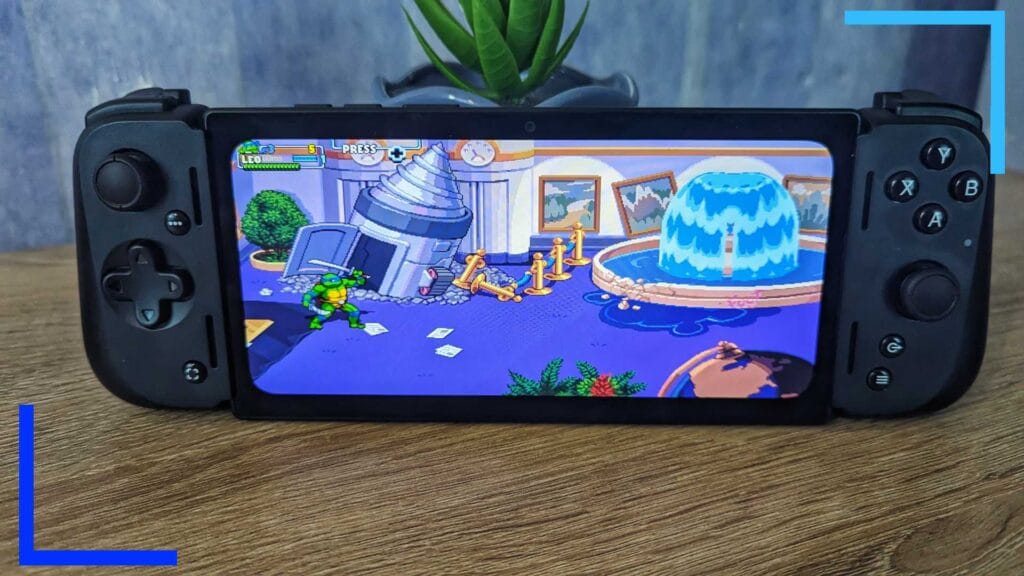
It goes without saying, the game streaming apps – Steam Link, GeForce NOW, and Xbox Cloud Gaming – are all dependent on your Internet. I’d also go one step further and say it’s dependent on the Razer Edge model you go with.
Full transparency: I’m on 200MB Internet, though I do often have other family members using the Internet alongside me. Still, that 200MB should be more than enough to run everything with minimal fuss.
Of the services I tested on the 2.4GHz version of the Razer Edge, I found Xbox Cloud Gaming to be the superior option. Rarely did I suffer lag, and response times feel snappy.
GeForce NOW I was less impressed with. Games ran and looked striking, but the wait times combined with spotty connections, even when I was sitting close to my router, made the experience less enjoyable.
It’s important to note with any kind of streaming test or review, your mileage will vary. I can only report on what my experience was, yours may be exponentially better or significantly worse. I would strongly advise taking a look at how your Internet performs if you’re buying a Razer Edge console primarily for streaming just so you’ve got the best chance of success.
Price and Alternatives

At $399.99 for the WI-FI model (the 5G is available through Verizon), that price puts the Razer Edge in the higher bracket. For comparison, it’s the same price as the Steam Deck and $50 more than the Logitech G Cloud.
It’s also double the price of the popular AYN Odin Lite, although there’s a lot to consider here. The AYN Odin is a pain to get hold of due to long shipping times and newer product releases, and it’s now much less powerful than the Razer Edge. The price disparity between the two Android devices does make sense in that regard.
The biggest comparison is sure to be the more powerful Steam Deck and the choice between the two boils down to whether you want a handheld PC and everything that comes with it, or an Android device.
With the Razer Edge, setup is easy and if you’ve got an Android phone or tablet, you’re more than qualified to get it up and running. The Steam Deck, meanwhile, is a PC that runs on Linux. The advantage of the Deck is you also get access to PC gaming along with streaming and stronger emulation performance. But, you’re dealing with a Linux-based system, which can be a headache to navigate if you ever want to tinker.
In short, it’s ease of use versus complicated power.
| Stronger Performance | |
| Steam Deck | $399.99 |
| Similar Ballpark | |
| Logitech G Cloud | $349.99 |
| Lesser Performance | |
| AYN Odin Lite | $199.99 |
| Retroid Pocket 3+ | $149.99 |
Verdict
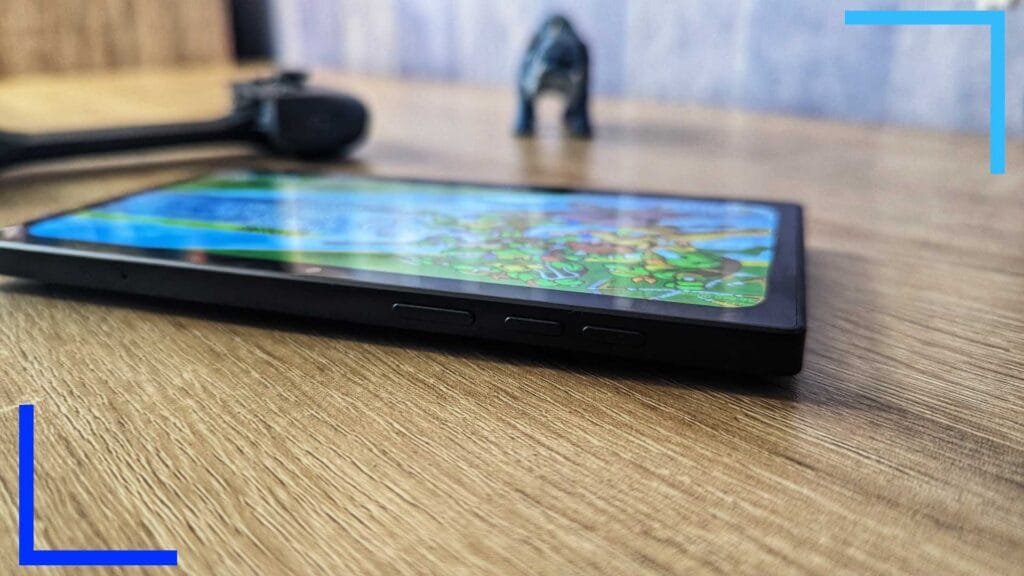
Whenever a new Android gaming handheld is released, the question of ‘who is it for?’ always comes up. It is, thankfully, an easy question to answer. The Razer Edge is designed for people who want high-end Android gaming in an environment they’re familiar with. That’s all there is to it.
The question any potential owners need to ask themselves is are they willing to put up with the Razer Edge’s shortcomings in favor of the powerful good stuff?
Yeah, it’s expensive, but the tech and operating system is enough to justify it to those who want a killer Android gaming experience. Android games run brilliantly, as do some of the game streaming apps. And emulation? It’s on point.
But it’s impossible to recommend the Razer Edge without serious caveats. It feels like a handheld of two halves that were unceremoniously smushed together. The result is accidental greatness, but its frequent niggling problems glare brighter than its AMOLED screen.
All photos and screenshots captured by Wesley Copeland. Review unit provided by Razer.

